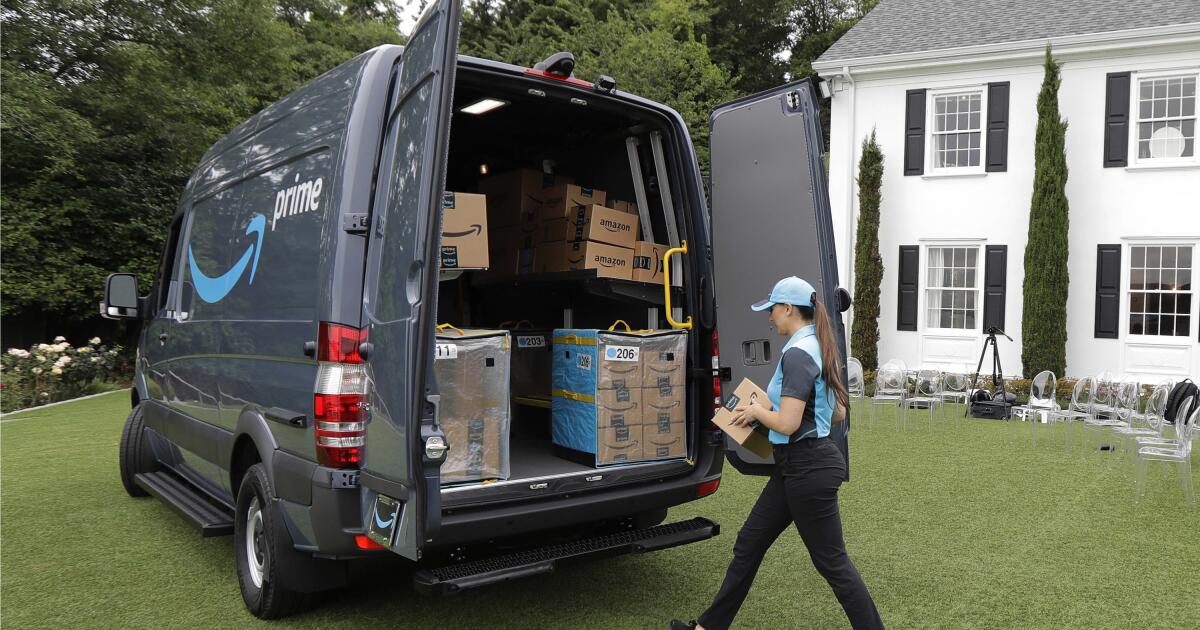Amazon plans to slash roughly 14,000 corporate jobs as the e-commerce giant competes in the race to advance artificial intelligence.
A company executive told employees on Tuesday that even though Amazon’s business is performing well, it aims to eliminate more layers within the company so it can “move as quickly as possible.”
“This generation of AI is the most transformative technology we’ve seen since the Internet, and it’s enabling companies to innovate much faster than ever before (in existing market segments and altogether new ones),” wrote Beth Galetti, Amazon’s senior vice president of people experience and technology, in a memo to employees the company posted online.
Amazon is headquartered in Seattle, but the company’s global workforce includes workers in the Los Angeles area. Galetti’s memo doesn’t say where the affected employees are based.
The company didn’t answer questions about whether California employees are part of the cuts. The California Employment Development Department said it hadn’t received layoff notices related to Amazon’s latest cuts as of Tuesday morning.
On professional social network LinkedIn, Amazon employees who posted they were laid off included recruiters, engineers and managers in various states.
The layoffs are the latest example of how major tech companies are reorganizing their workforce and cutting costs as they invest billions of dollars in artificial intelligence. Last week, social media company Meta said it was cutting 600 jobs in its AI division as part of efforts to move swiftly and eliminate more layers within the company.
Following the popularity of OpenAI’s ChatGPT, a chatbot that can generate text, images and code, big tech companies such as Google, Microsoft, Amazon and Meta are also competing head-to-head with smaller startups that are swiftly releasing new AI features.
The rise of what’s known as generative AI has the potential to disrupt various industries, and that includes how people shop and buy items online.
Tech companies are spending big on compensation packages to recruit top AI researchers, building new data centers and doubling down on AI-powered agents and robots. Still, the rise of AI has fueled anxiety among workers concerned their jobs could be automated.
In June, Amazon’s Chief Executive Andy Jassy said he expects the e-commerce giant will shrink its workforce as employees “get efficiency gains from using AI extensively.” Amazon’s job cut announcement also followed an earlier report by Reuters on Monday that the e-commerce giant is targeting as many as 30,000 job cuts, raising questions about whether more layoffs are coming.
Uncertainty about the cost of tariffs has made retailers more cautious about spending. Earlier this year, Amazon clashed with the Trump administration over displaying the costs of tariffs but didn’t go through with the idea.
Neil Saunders, managing director of GlobalData, told the Associated Press in a statement the layoffs “represent a deep cleaning of Amazon’s corporate workforce.”
“Unlike the Target layoffs, Amazon is operating from a position of strength,” he said. “The company has been producing good growth, and it still has a lot of headroom for further expansion in both the U.S. and overseas.”
It remains to be seen whether massive AI investments will pay off. Amazon said in June it plans to invest $10 billion in North Carolina to expand cloud computing infrastructure and advance AI. The company has also committed to invest $10 billion each for data center projects in Mississippi, Indiana and Ohio.
Galetti said in Tuesday’s note that most people who will lose their jobs have 90 days to look for roles internally, and recruiters will prioritize those candidates.
Amazon’s jobs website shows that the company is hiring for more than 100 roles in California including senior product managers, engineers and other jobs.
Amazon has about 350,000 corporate employees and the cuts represented about a 4% reduction in its corporate workforce.
The company, scheduled to report quarterly results on Thursday, saw its share price jump more than 1% after the layoffs were announced.
The Associated Press contributed to this report.

